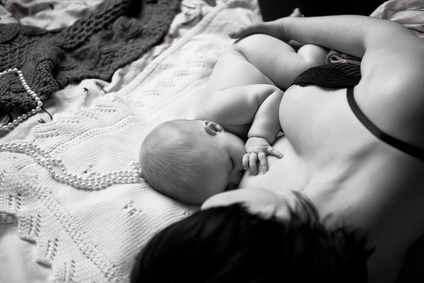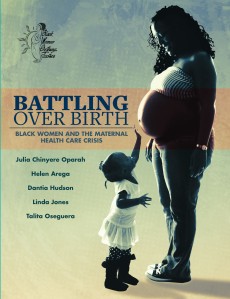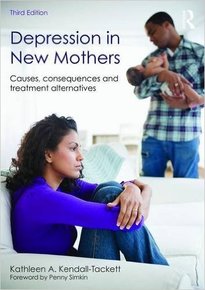Sarah Ockwell-Smith, Kathleen Kendall-Tackett, John Hoffman, Helen Stevens, Darcia Narvaez, James McKenna, Wendy Middlemiss, Tracy Cassels
The science of nighttime care

The number of times infants wake and need help to return to sleep decreases as they grow, but still remains fairly common. Research by Weinraub and her colleagues confirms how normal it is for babies to wake at night, with 66% of 6-month-olds still waking at least once or twice a week, and the remaining babies waking even more often. Some babies will cry when waking at 12 months of age—even babies who have settled back to sleep on other nights.
Helping an infant return to sleep easily, then, is an essential gift, and an important goal for parents who need to rest. The science of nighttime care provides a good foundation for parents trying to calm their babies. It clarifies what is important to know about calming babies and why certain types of calming are most likely to be helpful.
What is important to know
A parent’s presence helps to calm babies who awaken in an upset state.
 Babies (especially in the first few months) are not yet capable of regulating their emotional states. This is one of the reasons why crying tends to increase in the first 2 to 3 months of life, and then decrease steadily after that. Infants cry or fuss for many reasons, including hunger, pain, or other discomfort or, at times, simply from a desire for physical contact. For example, the amount of infant crying and fussing behavior generally reduces by as much as 43% at 6 weeks of age (Hunziker & Barr, 1988).
Babies (especially in the first few months) are not yet capable of regulating their emotional states. This is one of the reasons why crying tends to increase in the first 2 to 3 months of life, and then decrease steadily after that. Infants cry or fuss for many reasons, including hunger, pain, or other discomfort or, at times, simply from a desire for physical contact. For example, the amount of infant crying and fussing behavior generally reduces by as much as 43% at 6 weeks of age (Hunziker & Barr, 1988).
Fussing and crying are the most important means by which an infant communicates needs and desires. The specific reason cannot always be determined, but for sure, displaying visible and audible signs of distress is an infant’s most important defence, and is overwhelmingly adaptive. When upset, babies depend on sensory input from caregivers—touch, soothing voice, smell, eye contact, breastfeeding—in order to calm down. That’s the way nature designed it to work.
Babies rely on their caregivers to calm them and to help deal with the other reasons they are unhappy or uncomfortable, such as pain, hunger, or any other physical or emotional state that we may not even be able to determine.
Being present, and attending to infants when they wake and cry, can help them return to sleep more quickly (Mao, Burnham, Goodlin-Jones, Gaylor, & Anders, 2004).
Calming helps infants learn to calm themselves.

When caregivers help infants calm down by attending to their distress, their infants develop the tools—both physiologically and emotionally—to calm themselves. This is how parents help children generally (Davidov & Grusec, 2006; Stifter & Spinrad, 2002). Parents are often hesitant to be present when babies cry, fearing that attending to crying will lead them to be unable to deal with distress on their own. But such an approach only leads to a fussy baby and a clingy child.
Leaving babies to cry increases their stress levels and often keeps them awake longer. It does not guide them emotionally or physically toward the goal of regulating their own distress and response. Instead, to develop “good” or “healthy” sleep habits, babies need gentle parental guidance to resettle. Over time, this leads to a strong, self-settling child who can calm him or herself when challenges arise.
Understand why some babies fuss more at night than other babies.
Fussing upon awakening is a perfectly normal behavior. When babies are distressed, they are indicating a need for attention, often to help them recover a feeling of security. It is, however, important to understand that babies differ in what makes them feel secure.
 Because some infants don’t cry very much or very forcefully, some people think that all babies can/should be like that. But babies vary greatly in terms of how often and how hard they cry. These differences are driven by many factors, including temperament, experience, and physiological maturity. Thus, the need for external regulation (calming) continues in varying degrees for different babies.
Because some infants don’t cry very much or very forcefully, some people think that all babies can/should be like that. But babies vary greatly in terms of how often and how hard they cry. These differences are driven by many factors, including temperament, experience, and physiological maturity. Thus, the need for external regulation (calming) continues in varying degrees for different babies.
Providing external regulation for babies who feel less secure, and thus more distressed, actually helps not hinders. It helps them build the neural pathways that eventually enable them to deal with stress and calm themselves (Cassidy, 1994; Stifter & Spinrad, 2002).
♥ Bottom line: crying upon waking is a perfectly normal behavior. Helping crying infants feel comforted and calm supports their developing abilities to calm themselves over time.
Understand when waking is a problem.
 Waking is a normal part of infant sleep, and varies based on several factors:
Waking is a normal part of infant sleep, and varies based on several factors:
- feeding method (breast or bottle)
- age
- shifts in developmental levels individual level of maturity
In light of these factors, every family must determine whether an infant’s waking is a problem for the family. Waking isn’t a problem just because it happens. To suggest waking defines “problematic sleep” does not accurately reflect current science.
We know that it is normal for infants to wake several times in the night, especially if they are breastfeeding. And given that human babies are neurologically immature at birth, awakenings are the infant’s major line of defence against dangerous, prolonged breathing pauses as waking permits oxygenation. Moreover, transient and more prolonged awakenings can help babies respond to cardiopulmonary challenges while asleep and restore a more natural heart rhythmicity (Mosko et al., 1997a).
Recall that the early research on sudden infant death syndrome (SIDS) revealed that infants who woke frequently in the night were less likely to die of SIDS than those who woke significantly less often (see review in McKenna 1995 and Mosko et al., 1997a and b).
After babies are beyond the age of chief risk for SIDS, and their waking and sleeping settle into more of a consistent pattern, research shows that many continue to wake in the night (Weinraub et al., 2012).
♥ Parents can help recreate these calming environments across any sleep routine and sleep pattern. It’s important to remember what is calming and why.
Ways to calm babies
 The first 3 months of life is known to many as the “Fourth Trimester,” when a baby requires similar care to when in the womb. Some babies make the womb-to-world transition easily, others less so. Parents naturally try to calm babies in ways that recreate many of the comforting, familiar experiences of the time spent in utero. For all babies, these calming techniques can be very comforting.
The first 3 months of life is known to many as the “Fourth Trimester,” when a baby requires similar care to when in the womb. Some babies make the womb-to-world transition easily, others less so. Parents naturally try to calm babies in ways that recreate many of the comforting, familiar experiences of the time spent in utero. For all babies, these calming techniques can be very comforting.
Recreate movement
The womb is a space of constant movement and babies tend to respond by calming to movements, such as dancing, swaying from side to side, going for an exaggerated quick walk, or bumpy car ride.
Rely on touch—provide skin-to-skin contact
 Being in contact with warm, naturally (un)scented, skin is calming for babies, helping to stabilize their body temperature, heart rate, and stress hormones, and to stimulate the release of oxytocin—the love and bonding hormone–both in parent and baby.
Being in contact with warm, naturally (un)scented, skin is calming for babies, helping to stabilize their body temperature, heart rate, and stress hormones, and to stimulate the release of oxytocin—the love and bonding hormone–both in parent and baby.
Recreate familiar sounds
The baby’s time in the womb was marked by many rhythmic sounds. Sounds similar to those heard in the womb can be very calming. White noise offers constant surround sound while also slowing brain wave frequencies.
Sleep routines that can help calm babies
Close proximity usually means night feeds are much easier, there are more of them, and they are far less disruptive for parents and infants, and thus can be more settling. That said, just as with any sleep arrangement, bedsharing does carry risks (as does sleeping away from the baby), and there are very clear circumstances that we know that make bedsharing not advisable.
When bedsharing should be avoided.
It is important for the caregivers to refrain from bedsharing if they are not breastfeeding, and obviously, if any adult is under the influence of alcohol, drugs, or anything that may impair their natural arousal patterns. Surely, babies should sleep alongside the bed on a different surface if:
- adult bedsharers are excessively sleepy
- smaller children are likely to find their way in to the parents’ bed
- there is another adult present in bed who refuses to take any responsibility for the infant.
Bedsharing should be avoided if the mother smoked during pregnancy because infant arousal patterns may not be as efficient as they should be for maximum safety in such an environment. The same holds true for small, premature infants. They are safest sleeping alongside the bed in a different sleep structure rather than in the parental bed.
It is highly risky to fall asleep with an infant on a couch, sofa, or armchair as many infants have suffocated by being trapped between the adult, and some part of the furniture. In all these cases, co-sleeping (different surface, same room) is more advisable than bedsharing.
Help the infant learn to deal with sensations of hunger.
 Hunger is a new sensation for infants—and infants may find it hard to calm when they feel hungry. Feeding babies when they wake at night can help them transition back to sleep, especially when lighting and interaction are kept at low levels of stimulation. Babies also find sucking to be the ultimate way to relax, one of their few forms of self-initiated self-regulation. Sucking helps a baby’s skull bones to return to their normal position after birth, as well as providing the baby with comfort and security. Some find sucking on a dummy/pacifier soothing (but avoid this in the early weeks of breastfeeding as it can pose problems establishing breastfeeding). Non-nutritive suckling on the breast is also calming.
Hunger is a new sensation for infants—and infants may find it hard to calm when they feel hungry. Feeding babies when they wake at night can help them transition back to sleep, especially when lighting and interaction are kept at low levels of stimulation. Babies also find sucking to be the ultimate way to relax, one of their few forms of self-initiated self-regulation. Sucking helps a baby’s skull bones to return to their normal position after birth, as well as providing the baby with comfort and security. Some find sucking on a dummy/pacifier soothing (but avoid this in the early weeks of breastfeeding as it can pose problems establishing breastfeeding). Non-nutritive suckling on the breast is also calming.
♥ Note for parents. There is only one expert in caring for your baby—you. Sometimes you will find a way to calm your baby easily. Sometimes it may seem like what worked before doesn’t work now. Being patient with your baby and yourself will help you both learn and grow.
Keep babies close.
Keeping babies close helps in shared breathing, touch, warmth, and awareness of any difficulties. Babies are generally much calmer and sleep more easily if they are sleeping with their caregivers or in very close proximity. Babies can benefit from the shared breathing (and general sensory exchanges) with the caregiver including skin-to-skin contact, and this can be achieved to varying degrees depending on the overall safety conditions, including keeping the infant on a separate surface next to your bed, a behavior called “separate-surface co-sleeping.”
Many breastfeeding mothers find that intermittent bedsharing helps them continue breastfeeding, especially if they work during the day. While the American Academy of Pediatrics currently advises against bedsharing, it not only increases sleep time both for mothers and babies, but has the effect of increasing the chances that mothers will breastfeed for a greater number of months than if they place their infant elsewhere to sleep.
Wherever infants sleep, they should always be placed on their back. Moreover, if sleeping with or away from caregivers, infants should be positioned away from soft bedding, pillows, or toys, and be situated so that breathing is never obstructed, with their heads uncovered.
More on safe co-sleeping here (and below in the references).
Breastfeed
 In addition to all its other associated benefits to infant health and cognitive development, breastfeeding is an excellent way to calm a baby. It provides skin-to-skin contact and warmth. Breastfeeding can be of benefit to the caregiver as well, making wakings easier to manage and helping to reduce postnatal depression (Dennis & McQueen, 2009; Fergerson, Jamieson, & Lindsay, 2002; Kendall-Tackett, 2007). In one study, mothers who exclusively breastfed actually got more sleep and were less tired during the day than mothers who either exclusively formula-fed or both breast and formula-fed (Kendall-Tackett, Cong, & Hale, 2011).
In addition to all its other associated benefits to infant health and cognitive development, breastfeeding is an excellent way to calm a baby. It provides skin-to-skin contact and warmth. Breastfeeding can be of benefit to the caregiver as well, making wakings easier to manage and helping to reduce postnatal depression (Dennis & McQueen, 2009; Fergerson, Jamieson, & Lindsay, 2002; Kendall-Tackett, 2007). In one study, mothers who exclusively breastfed actually got more sleep and were less tired during the day than mothers who either exclusively formula-fed or both breast and formula-fed (Kendall-Tackett, Cong, & Hale, 2011).
Listen to the baby and trust your caring instincts.
Babies are master communicators, just as adults typically are masters at figuring out how best to respond. Adults don’t learn to rock a baby or to talk softly, these ideas come naturally. So to calm babies, it is helpful to follow the baby’s lead and one’s heart. Parents need to learn to follow their hearts to keep babies safe and healthy. If holding the baby seems to cause distress, then parents can stay with the baby, while placing him in a position that seems more helpful. If the parent is still, perhaps walk; if the parent is already moving, perhaps rock. Parents should trust their instincts in how to be present with the baby.
What if the routine is still stressful?
A time may come when a parent starts thinking, “I’ve been doing nighttime comforting for quite a while now. Is there anything I can do to move towards getting some uninterrupted nights?” The answer is yes. Partly it comes with time–varying times for different babies as Weinraub’s recent study showed. And there are some things parents can do to gently move in that direction with the baby. We can share some ways to help babies need less attention at night, if that is something that is essential for a family’s well-being. These approaches will build on the essential steps for calming discussed here.
- Listen to the baby’s signals
- Provide nurturance and support
- Help babies help themselves
References
Cassidy, J. (1994). Emotion regulation: Influences of attachmentMonographs of the Society for Research in Child Development, 59, 228-283.
Davidov, M. & Grusec, J.E. (2006). Untangling the links of parental responsiveness to distress and warmth to child outcomes. Child Development, 77, 44-58.
Dennis, C.-L., & McQueen, K. (2009). The relationship between infant-feeding outcomes and postpartum depression: A qualitative systematic review. Pediatrics, 123, e736-e751.
Fergerson, S.S., Jamieson, D.J., & Lindsay, M.(2002). Diagnosing postpartum depression: can we do better? American Journal of Obstetrics and Gynecology, 186, 899-902.
Hunziker, U.A., & Barr, R.G. (1986). Increased carrying reduces infant crying: A randomized controlled trial. Pediatrics, 77, 641-648.
Kendall-Tackett, K. A. (2007). A new paradigm for depression in new mothers: The central role of inflammation and how breastfeeding and anti-inflammatory treatments protect maternal mental health. International Breastfeeding Journal, 2:6.
Kendall-Tackett, K.A., Cong, Z., & Hale, T.W. (2011). The effect of feeding method on sleep duration, maternal well-being, and postpartum depression. Clinical Lactation, 2(2), 22-26.
Mao, A., Burnham, M.M., Goodlin-Jones, B.L., Gaylor, E.E., & Anders T.F. (2004). A comparison of the sleep-wake patterns of cosleeping and solitary-sleeping infants. Child Psychiatry and Human Development, 35, 95-105.
McKenna, J.J. (1995). The potential benefits of infant-parent co-sleeping in relation to SIDS prevention, In T. O. Rognum (Ed.), SIDS in the 90s. Scandinavian Press.
McKenna, J.J., & Mosko, S. (1990). Evolution and the sudden infant death syndrome (SIDS) Part II: Why human infants? Human Nature, 1 (2).
McKenna, J.J., & Mosko, S. (1990). Evolution and the sudden infant death syndrome (SIDS), Part III: Parent-infant co-sleeping and infant arousal, Human Nature, 1(2).
McKenna, J.J., & Mosko, S. (2001). Mother-infant cosleeping: Toward a new scientific beginning. In R. Byard & H. Krous, (Eds.), Sudden Infant Death Syndrome: Puzzles, problems and possibilities. London: Arnold Publishers.
Mosko, S., Richard, C., & McKenna, J. J. (1997). Infant arousals during mother-infant bed sharing: implications for infant sleep and SIDS research, Pediatrics, 100(2), 841-849.
Mosko, S., Richard, C., & McKenna, J. J. (1997). Maternal sleep and arousals during bedsharing with infants, Sleep, 201(2), 142-150.
Stifter, C.A., & Spinrad, T.L. (2002). The effect of excessive crying on the development of emotion regulation. Infancy, 3, 133-152.
Weinraub, M., Bender, R.H., Friedman, S.L., Susman, E.J., Knoke, B., Bradley, R., Houts, R.,
Williams, J. (2012). Patterns of developmental change in infants’ nighttime sleep awakenings from 6 through 36 months of age. Developmental Psychology, 48, 1501-1528.
Sleep Awareness on Women’s Health Today

Controlled Crying and Long-Term Harm
Four Reasons Our Sleep Is Being Disturbed
Help for Very Fatigued New Mothers
How Do Mothers Get More Sleep?
Lying Down to Breastfeed: Mother and Baby Sleep Position
Safe Sleep Guide for Breastfeeding Families






















November 22, 2018 at 10:38 am
Thanks for the great article. I did this simple trick and after 1 week my baby sleeps all night without getting up:
http://www.bestquicktips.com/babysleep
LikeLike